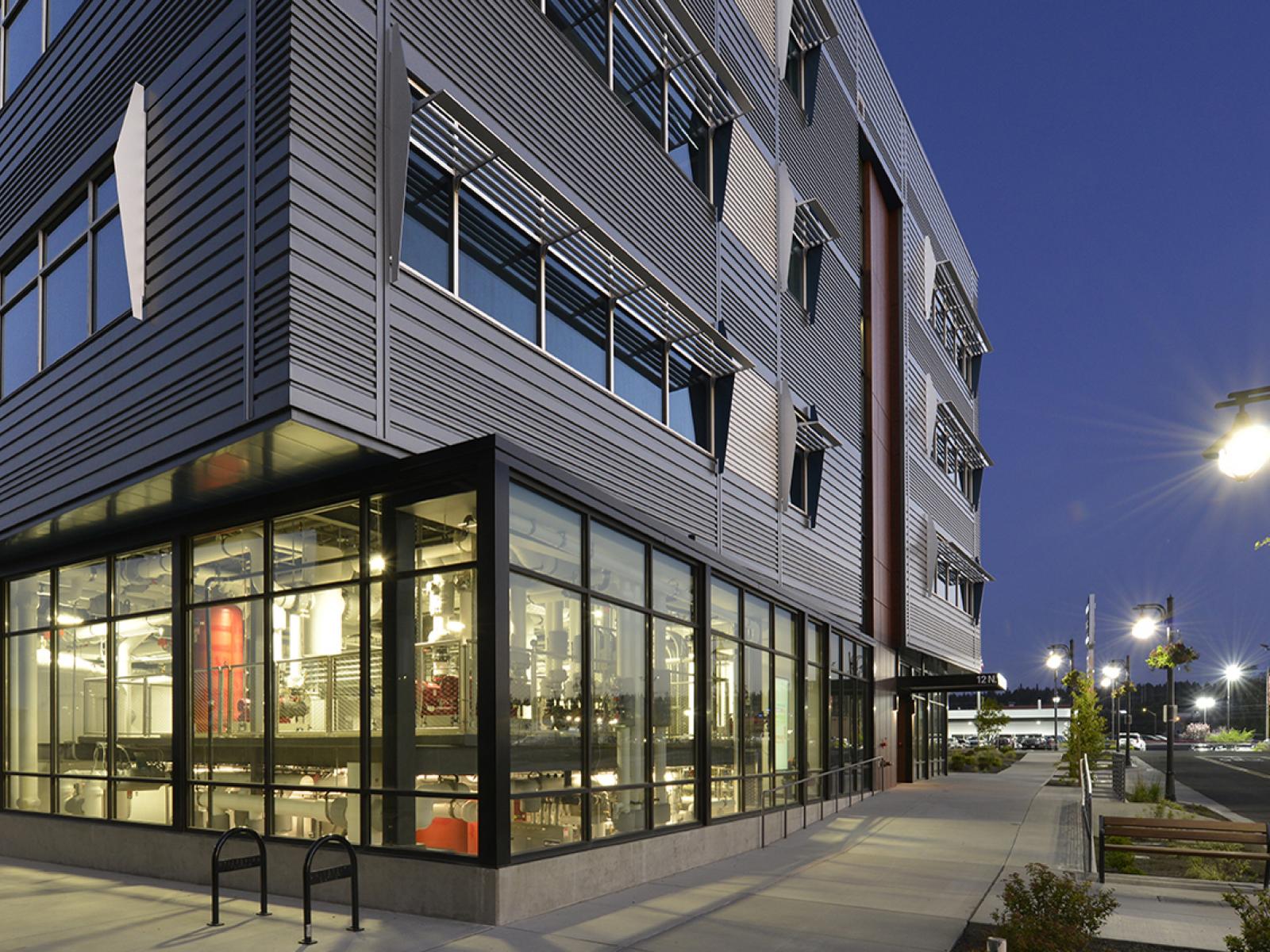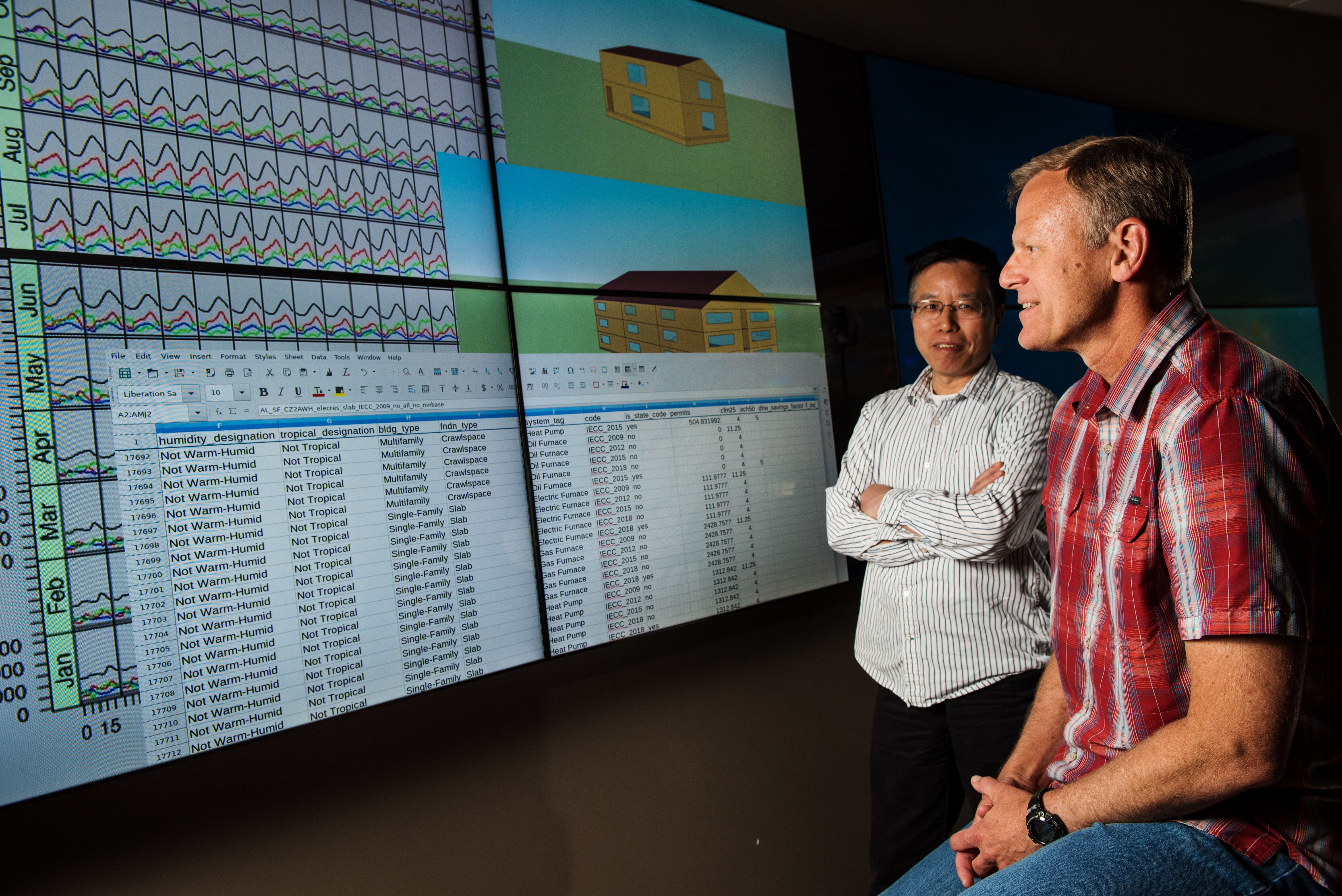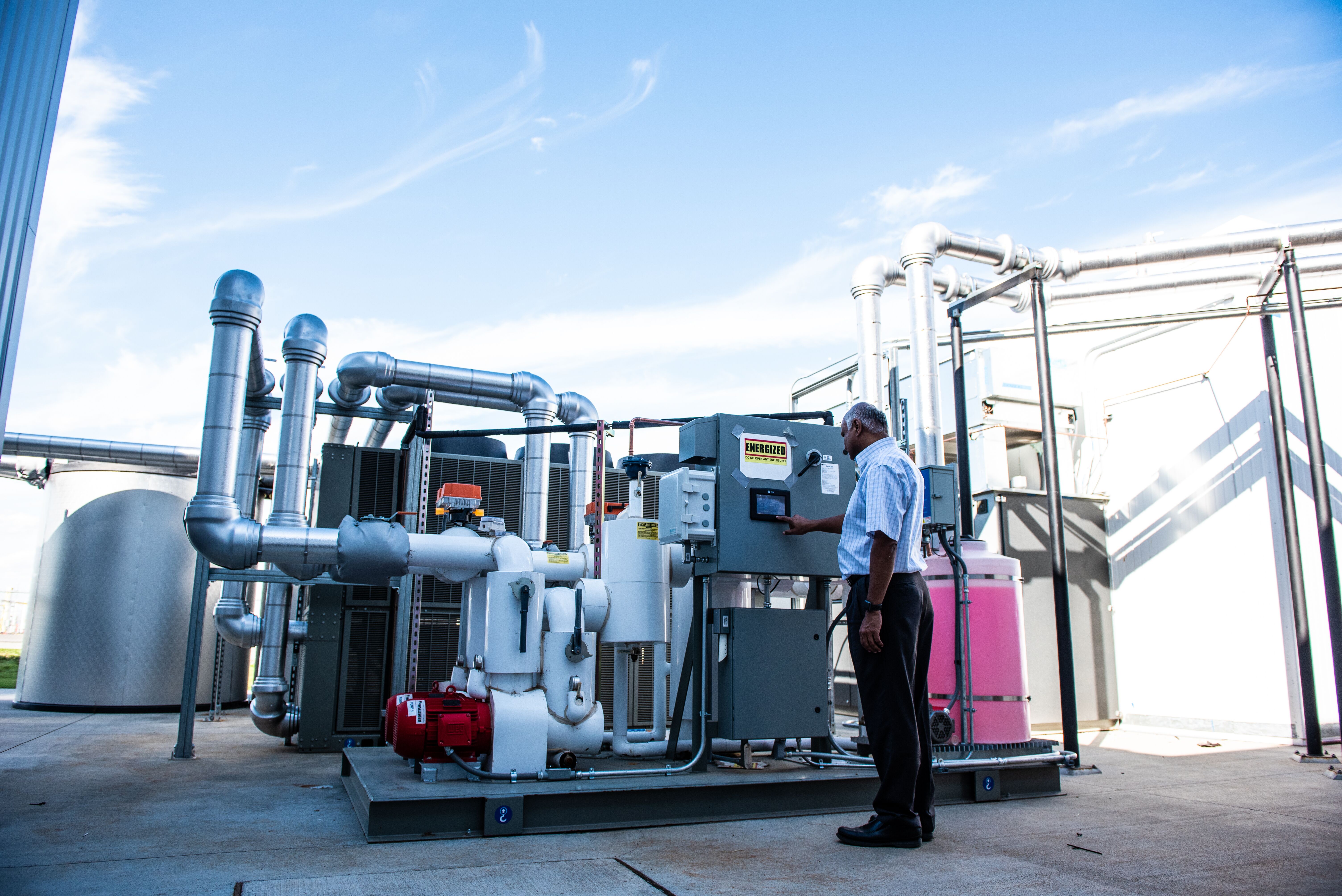Sustainability, Energy Research Included in Spokane Smart Eco-District

PNNL researchers are testing energy innovations at the Eco-District in Spokane, Wash., which includes the Scott Morris Center (shown here) and its central energy plant, which provides energy for itself and the adjacent Catalyst building.
(Image: AVISTA)
The vision to create the “five smartest blocks in the world” is coming to life in nearby Spokane, Wash.
In a project envisioned by Avista and realized with the help of McKinstry and others, a new development known as the “Eco-District” has become a prototype for sustainable buildings and a real-world demonstration of energy innovations and a shared energy model.
Researchers at the Department of Energy’s Pacific Northwest National Laboratory will deploy and test novel building technologies and energy-management approaches involved in the Eco-District, including some that were developed by PNNL and tested on our Richland campus.
PNNL’s contribution to the project builds on prior efforts sponsored by DOE and Washington State’s Clean Energy Fund.
In this project, researchers hope to demonstrate that these technologies can be deployed cost-effectively in the field while delivering cost savings to building owners, occupants and the electric utility.
This is important, because buildings account for 75 percent of the electricity consumed in the United States today.
Carbon emissions also will be reduced through sustainable building design, greater energy efficiency, increased use of clean energy and improved coordination between energy supply and demand.
Researchers have been installing hardware and software in the Eco-District’s two flagship buildings and the centralized heating, cooling and electrical system that serves them.

The Eco-District includes rooftop solar panels, batteries and thermal energy storage devices, as well as thousands of sensors and next-generation controls and communication technologies. Together, these technologies will enable active energy management to be coordinated at the building level.
The innovations being tested will allow buildings and devices to “talk” to one another and the grid.
When building operators and utilities share information, they can work together to make the best use of the existing grid, delay costly construction to meet energy demand and, ultimately, make energy more affordable to everyone.
Researchers will study what is known as intelligent load control, where devices such as heat pumps and energy storage resources can respond when electricity use is at its highest by operating in a way that reduces consumption while keeping the occupants comfortable.
For example, the Eco-District’s air-conditioning units have variable capacity rather than a simple on/off cycle. When demand for electricity is high, they can run at lower capacity while thermal storage devices supplement its heating and cooling needs.
Or the Eco-District could use the energy stored in batteries or produced by on-site solar panels, reducing demand for electricity from the grid.
One technology being integrated into the building automation system at the Eco-District is Eclipse VOLTTRON™, a PNNL-developed open-source software platform that enables distributed sensing and control.
The value of this technology has been shown on PNNL’s campus in Richland, where it has been installed in 16 buildings, along with a network of 10,000 sensors that record 14 million data points every day.

As a result, PNNL can reduce energy costs in its buildings by nearly 20 percent while improving grid flexibility.
The Eco-District also will test the communication technologies that allow the transactional aspects of the shared energy model by enabling the quick prioritization of power use and cost.
The utility can offer an incentive to lower consumption, and buildings can automatically respond. Similarly, the buildings can request the energy they need, and the grid can balance the demand and adjust the cost based on available supply.
So, the next time you are in Spokane, visit the Eco-District’s Catalyst building and Scott Morris Center for Energy Innovation to glimpse the future of smart buildings made possible by Avista and McKinstry.
This innovative approach to sharing energy will lead to new ways to operate buildings, including how to maximize energy efficiency and improve reliability.
And everyone wins—building owners, utilities and residents—all with a little help from the creative minds at PNNL.
Steven Ashby, director of Pacific Northwest National Laboratory, writes this column monthly. To read previous Director's Columns, please visit our Director's Column Archive.
Published: June 21, 2021